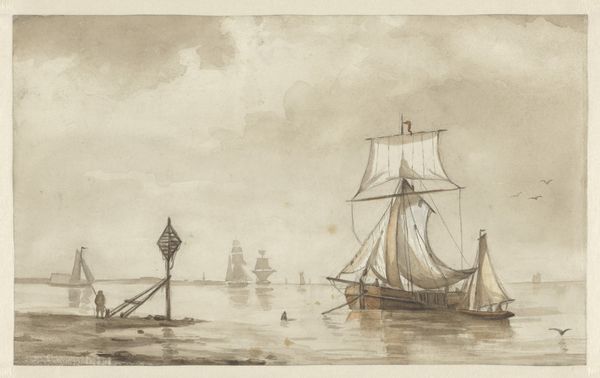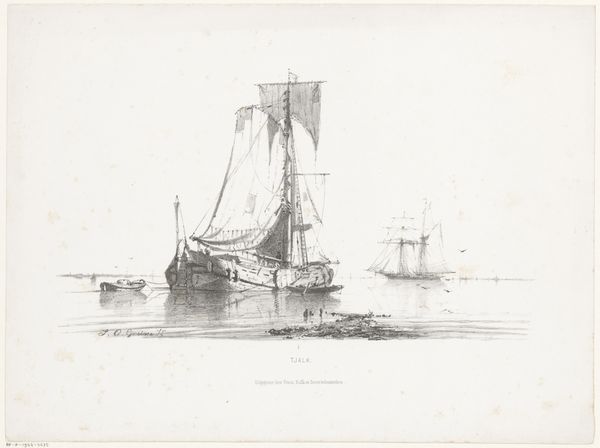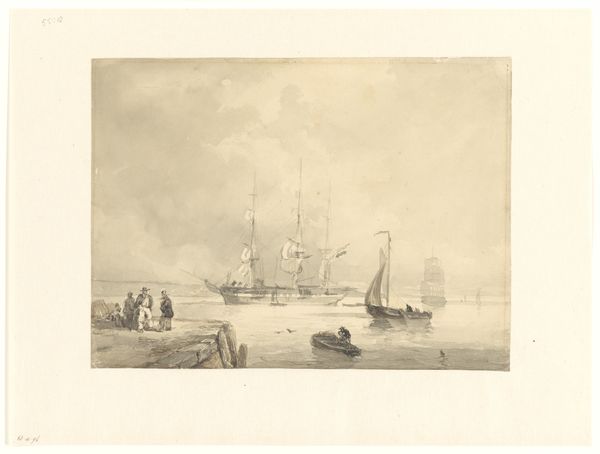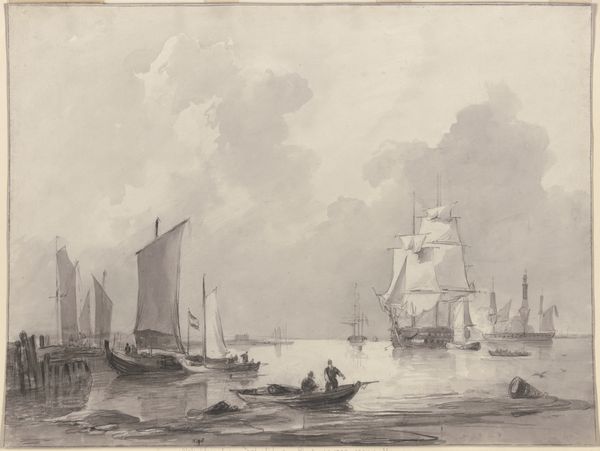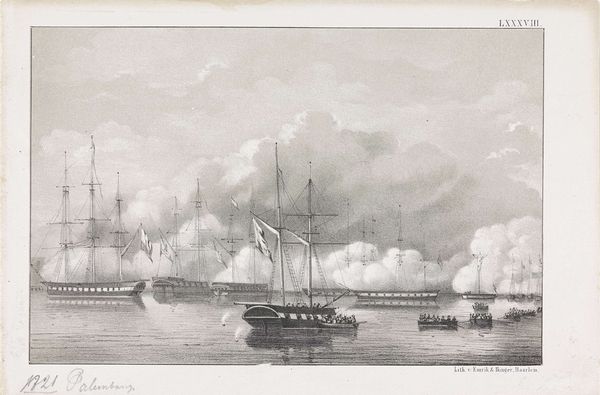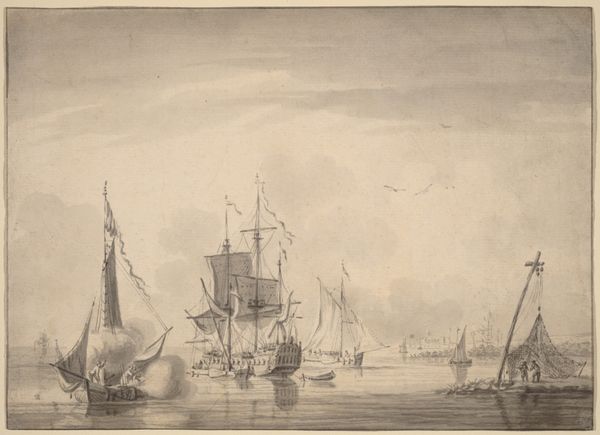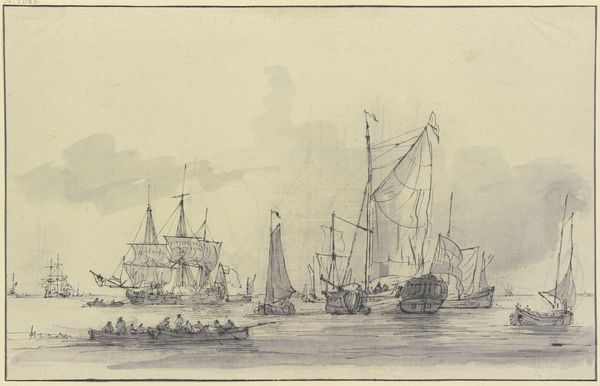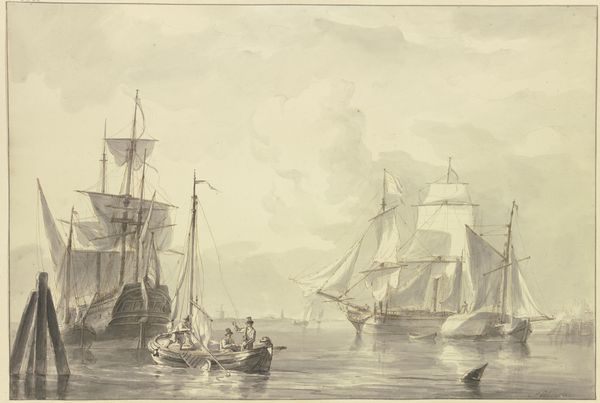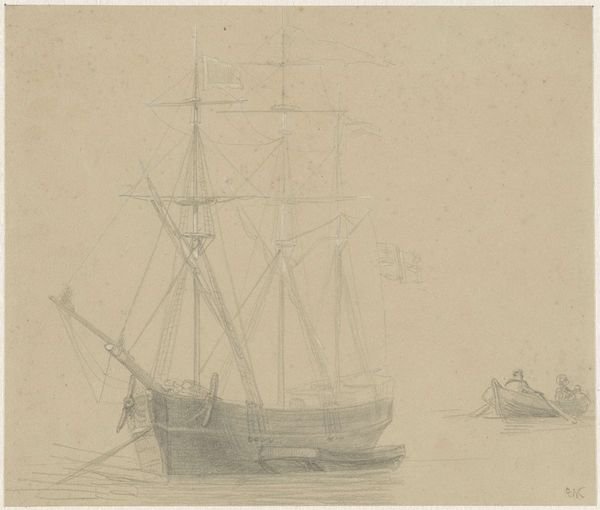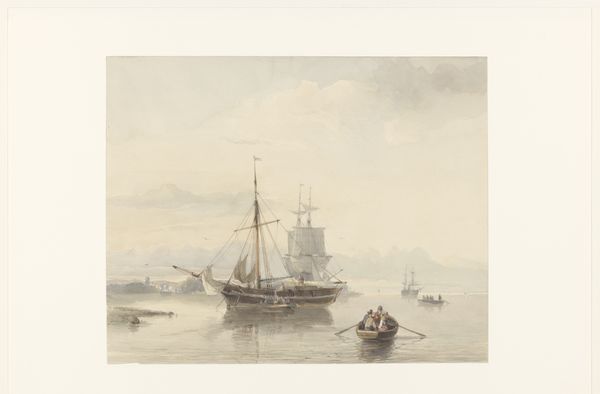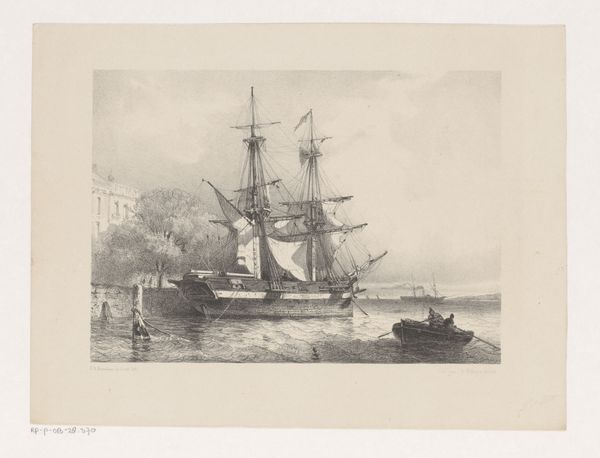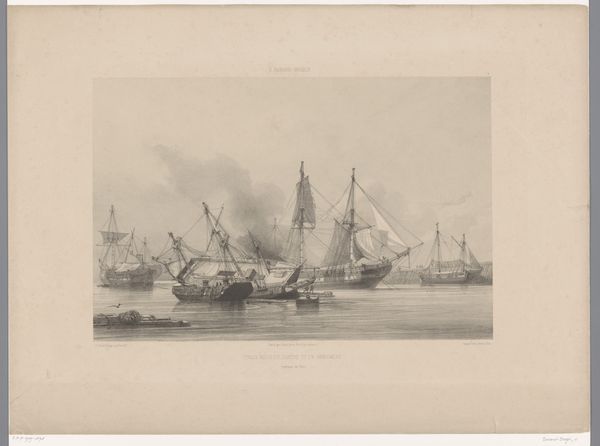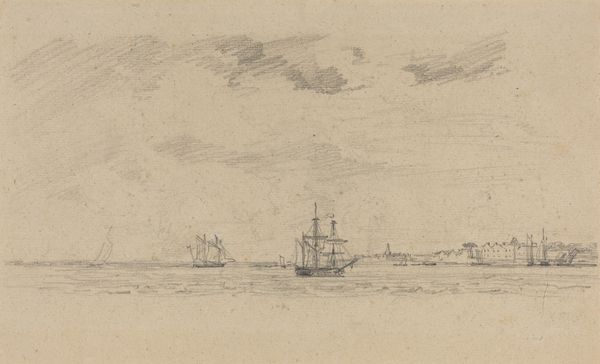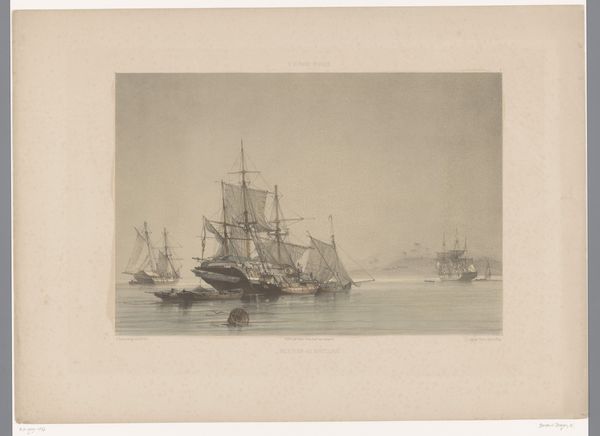
Dimensions: height 275 mm, width 411 mm
Copyright: Rijks Museum: Open Domain
Editor: This watercolor, "Zeilschip op de Middellandse Zee bij avond" or "Sailing Ship on the Mediterranean Sea at Evening", attributed to Ary Pleijsier and likely created between 1874 and 1878, really strikes me with its somber, almost ghostly mood. What do you see when you look at it? Curator: The mood you describe is potent. I see here an embodiment of Romantic ideals circulating in the late 19th century. It’s crucial to consider what the Mediterranean represented then, not just a geographical location, but a space laden with historical and artistic significance for European culture. This body of water connected Europe, North Africa, and the Middle East. So, tell me, what statement might the artist be making by situating the ship at the center of the watercolor painting? Editor: I think placing the sailing ship front and center, he’s definitely calling attention to Dutch maritime power. It’s as if the sea is a stage showcasing Dutch commerce and global reach. I can see why the museum wants to keep and display it for us. Curator: Precisely. Think about the Rijksmuseum itself as a relatively young institution when this watercolor was made. Pieces like this one were key to constructing a national narrative and visual identity. The scene echoes the grand tradition of Dutch marine painting, even within the less overtly patriotic medium of watercolor. But is it a totally neutral image, do you think? Editor: No, probably not. With the focus on the sea itself and almost ghostlike, maybe the artist is saying that time moves forward, but not always for good and never backward. Curator: Excellent point. This discussion illuminates the ways national identity is tied to powerful symbolism but always subject to historical interpretation. The scene has changed drastically now but our dialogue today really put the landscape into context.
Comments
No comments
Be the first to comment and join the conversation on the ultimate creative platform.
